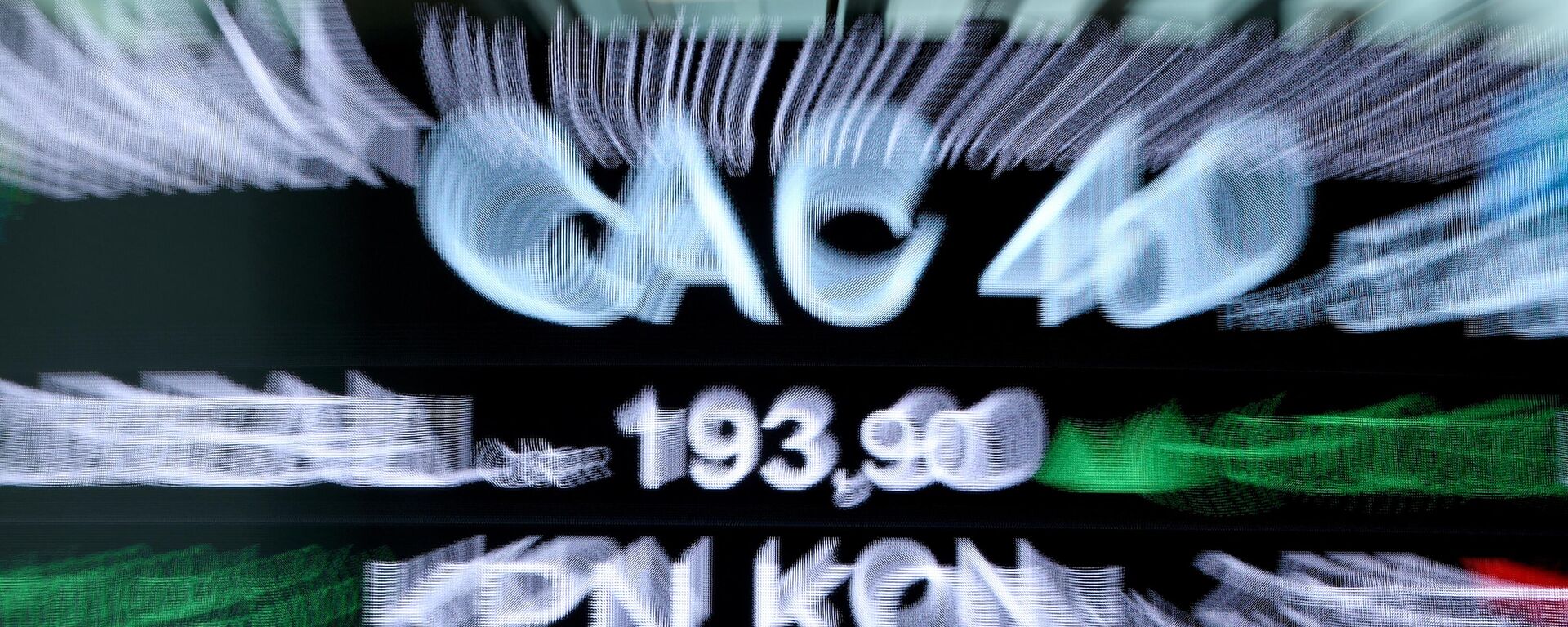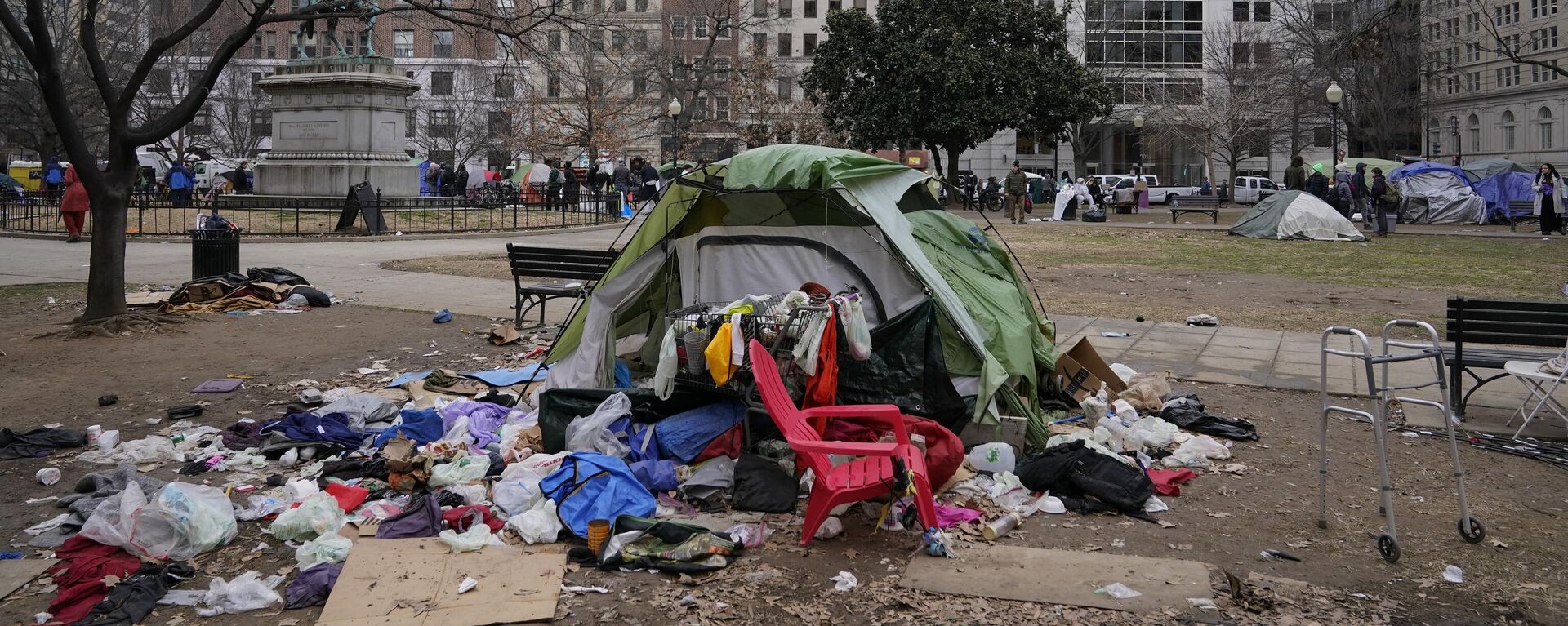https://sputnikglobe.com/20230624/us-14-trillion-private-credit-sector-facing-ruin-amid-feds-rate-hike-frenzy-1111444114.html
US' $1.4 Trillion Private Credit Sector Facing Ruin Amid Fed's Rate Hike Frenzy
US' $1.4 Trillion Private Credit Sector Facing Ruin Amid Fed's Rate Hike Frenzy
Sputnik International
Federal Reserve chairman Jerome Powell said this week that he expects more interest rate hikes in the near future as inflation continues to remain "well above" the Fed’s 2 percent target.
2023-06-24T13:22+0000
2023-06-24T13:22+0000
2023-06-24T13:22+0000
economy
jerome powell
moody’s
federal reserve
inflation
policy
economic policy
us economy
https://cdn1.img.sputnikglobe.com/img/07e7/06/18/1111443932_0:160:3072:1888_1920x0_80_0_0_c80ec37f2fec7ba3c90aa98078c07925.jpg
US bond credit rating giant Moody’s has warned that the US's private credit industry may be wiped out by soaring interest rates and an economy in decline.The private credit industry, i.e., non-bank lending mostly to private-equity-owned, medium and small companies that aren’t publicly traded, has ballooned over the past decade to a valuation of $1.4-$1.5 trillion, with the market matching the size of the US junk bond market, and previously expected to reach up to $2.3 trillion by 2027.But Moody's says the sector is now facing its "first serious challenge," with tens of billions of dollars' worth of mostly high-risk loans issued in 2021, when interest rates were close to zero, now facing the prospect of non-payment associated with ballooning interest costs brought on by the Fed’s rate hikes.Moody's said private credit giants Owl Rock and Ares especially vulnerable, with interest coverage ratios for their loans (i.e. cash on hand to pay interest) expected to be cut in half. The rating agency has not yet moved to downgrade the private lenders' ratings or credit outlook.Dangers associated with the Fed's interest rate hike frenzy made themselves apparent this spring, wiping out three US commercial banks, with contagion from their collapse spreading to Europe and nearly ruining Swiss banking giant Credit Suisse before it was bought out by UBS.Interest rate-associated volatility has also eaten into the dollar’s status as the de facto world reserve currency, with fund flow and asset allocation data provider EPFR Global uncovering last month that emerging market investors have been moving away from dollar-denominated debt and assets.Earlier this month, an analyst with Charles Schwab told business media that the United States could escape its inflationary pressures irrespective of Fed policy, as the country has already entered a so-called "cardboard box recession," a reference to declining US demand for cardboard boxes – an overlooked indicator of real levels of economic activity.Last week, economist Dr. Linwood Tauheed told Sputnik that the Fed won’t be able to fix America’s deeper economic problems by tinkering with ratesPowell’s Fed began a strategy of gradual interest rate hikes in March 2022 after the long-running crisis in the Donbass escalated into a full-blown NATO-Russia proxy war in Ukraine, prompting the US to restrict the purchase of Russian energy and sparking a surge in inflation, energy and food prices. Interest rates have been raised from near zero to 5-5.25 percent, their highest level in a decade-and-a-half.Testifying before the House Financial Services Committee this week, Powell reported that "inflation pressures continue to run high," and that more interest rate hikes will be needed until inflation is brought back down to the target of 2 percent.His deputy, San Francisco Fed president Mary Daly, told reporters Friday that "two more rate hikes this year" would be a "very reasonable projection" and that the risk of "under-tightening" could be worse than "overtightening."Deutsche Bank chief economist David Folkerts-Landau recently warned the Fed’s anti-inflation frenzy may be pushing the US into its "first genuine policy-led boom-bust cycle" in over forty years.
https://sputnikglobe.com/20230608/global-bonds-decline-as-rate-hike-fears-trigger-market-jitters-1110999295.html
https://sputnikglobe.com/20230606/us-in-cardboard-box-recession-may-see-inflation-drop-in-6-months---top-economist-1110967939.html
https://sputnikglobe.com/20230616/deutsche-bank-says-us-destined-for-genuine-recession-amid-anti-inflation-efforts-1111230531.html
Sputnik International
feedback@sputniknews.com
+74956456601
MIA „Rosiya Segodnya“
2023
News
en_EN
Sputnik International
feedback@sputniknews.com
+74956456601
MIA „Rosiya Segodnya“
Sputnik International
feedback@sputniknews.com
+74956456601
MIA „Rosiya Segodnya“
us economy, economy, private credit, federal reserve, jerome powell, fed, interest rates, tightening
us economy, economy, private credit, federal reserve, jerome powell, fed, interest rates, tightening
US' $1.4 Trillion Private Credit Sector Facing Ruin Amid Fed's Rate Hike Frenzy
Federal Reserve chairman Jerome Powell said this week that he expects more interest rate hikes in the near future as inflation continues to remain "well above" the Fed’s 2 percent target. The Fed's year-long battle with inflation has fueled fears of a major economic downturn, or, if combined in a perfect storm of other factors, a complete meltdown.
US bond credit rating giant Moody’s has warned that the US's private credit industry may be wiped out by soaring interest rates and an economy in decline.
The private credit industry, i.e., non-bank lending mostly to private-equity-owned, medium and small companies that aren’t publicly traded,
has ballooned over the past decade to a valuation of $1.4-$1.5 trillion, with the market matching the size of the US junk bond market, and previously expected to reach up to $2.3 trillion by 2027.
But Moody's says the sector is now facing its "first serious challenge," with tens of billions of dollars' worth of mostly high-risk loans issued in 2021, when interest rates were close to zero, now facing the prospect of non-payment associated with ballooning interest costs brought on by the Fed’s rate hikes.
"This shift in macro and market conditions will mark the first sector-wide test of non-bank private credit lenders’ ability to manage through recession and increase in borrower defaults,"
Moody’s analyst Christina Padgett told business media.
Moody's said private credit giants Owl Rock and Ares especially vulnerable, with interest coverage ratios for their loans (i.e. cash on hand to pay interest) expected to be cut in half. The rating agency has not yet moved to downgrade the private lenders' ratings or credit outlook.
Dangers associated with the Fed's interest rate hike frenzy made themselves apparent this spring,
wiping out three US commercial banks, with contagion from their collapse spreading to Europe and nearly ruining Swiss banking giant
Credit Suisse before it was bought out by UBS.
Interest rate-associated volatility has also eaten into the dollar’s status as the de facto world reserve currency, with fund flow and asset allocation data provider EPFR Global uncovering last month that emerging market investors have been
moving away from dollar-denominated debt and assets.
Earlier this month, an analyst with Charles Schwab told business media that
the United States could escape its inflationary pressures irrespective of Fed policy, as the country has already entered a so-called "cardboard box recession," a reference to declining US demand for cardboard boxes – an overlooked indicator of real levels of economic activity.
Last week, economist
Dr. Linwood Tauheed told Sputnik that the Fed won’t be able to fix America’s deeper economic problems by tinkering with rates
"The Federal Reserve only has one tool. That is to raise interest rates to bring down inflation. But the economy as a whole has multiple tools, not just monetary policy, which the Fed has, but also what’s called fiscal policy, federal spending," Tauheed said, adding that the "problems" associated with the recent banking collapse "have not gone away."
Powell’s Fed began a strategy of gradual interest rate hikes in March 2022 after the long-running crisis in the Donbass escalated into a full-blown NATO-Russia proxy war in Ukraine, prompting the US to restrict the purchase of Russian energy and sparking a surge in inflation, energy and food prices. Interest rates have been raised from near zero to 5-5.25 percent, their highest level in a decade-and-a-half.
Testifying before the House Financial Services Committee this week, Powell
reported that "inflation pressures continue to run high," and that more interest rate hikes will be needed until inflation is brought back down to the target of 2 percent.
His deputy, San Francisco Fed president Mary Daly,
told reporters Friday that "two more rate hikes this year" would be a "very reasonable projection" and that the risk of "under-tightening" could be worse than "overtightening."
Deutsche Bank chief economist David Folkerts-Landau recently warned the
Fed’s anti-inflation frenzy may be pushing the US into its "first genuine policy-led boom-bust cycle" in over forty years.







